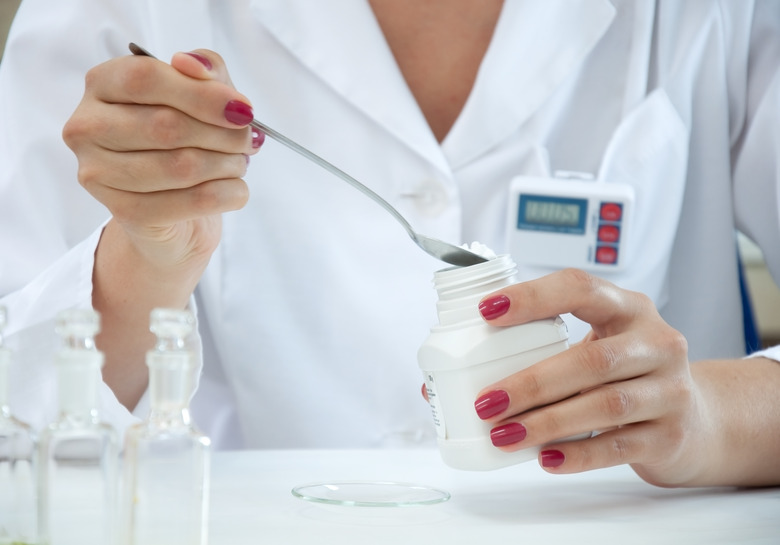Importance Of Measurements In Chemistry
Scientists never just grab handfuls of chemicals and toss them together. Accurate, precise measurement is a fundamental component of good science. For this reason, scientists developed the International System of Units, known as SI Units, to standardize measurements across all scientific disciplines. Even with a standardized system, there is room for uncertainty in the laboratory. Minimizing this uncertainty ensures proper understanding of a process or experiment.
TL;DR (Too Long; Didn't Read)
To ensure proper measurement in the chemistry lab, always use SI units to quantify and describe what you measure. Other important considerations for proper measurement include accuracy, precision and significant figures.
SI Units
SI Units
Scientific measurements use units to quantify and describe the magnitude of something. For example, scientists quantify length in meters. However, because there are many different units (e.g., inches, feet, centimeters), scientists developed SI units to avoid confusion. Using common units, scientists from different countries and cultures can easily interpret each others' results. SI units include meters (m) for length, liters (L) for volume, kilograms (kg) for mass, seconds (s) for time, Kelvin (K) for temperature, ampere (A) for electrical current, mole (mol) for amount and candela (cd) for luminous intensity.
Accuracy and Precision
Accuracy and Precision
When taking scientific measurements, it is important to be both accurate and precise. Accuracy represents how close a measurement comes to its true value. This is important because bad equipment, poor data processing or human error can lead to inaccurate results that are not very close to the truth. Precision is how close a series of measurements of the same thing are to each other. Measurements that are imprecise do not properly identify random errors and can yield a widespread result.
Significant Figures
Significant Figures
Measurements are only as accurate as the limitations of the measuring instrument allow. For example, a ruler marked in millimeters is accurate only up to the millimeter because that is the smallest unit available. When making a measurement, its accuracy must be preserved. This is achieved through "significant figures."
The significant figures in a measurement are all the known digits plus the first uncertain digits. For example, a meter stick delineated in millimeters can measure something to be accurate to the fourth decimal place. If the measurement is 0.4325 meters, there are four significant figures.
Significant Figures Limits
Significant Figures Limits
Any non-zero digit in a measurement is a significant figure. Zeroes that occur before a decimal point and after a non-zero digit in a decimal value are also significant. Whole number values, like five apples, have no impact on the significant digits of a calculation.
Multiplying and Dividing Significant Figures
Multiplying and Dividing Significant Figures
When multiplying or dividing measurements, count the significant figures in the numbers. Your answer should have the same number of significant figures as the original number with the lowest number of significant digits. For example, the answer to the problem 2.43 × 9.4 = 22.842 should be converted to 23, rounding up from the partial number.
Adding and Subtracting Significant Figures
Adding and Subtracting Significant Figures
When adding or subtracting measurements, determine the number of significant figures by noting the placement of the largest uncertain digit. For example, the answer to the problem 212.7 + 23.84565 + 1.08 = 237.62565 should be converted to 237.6, because the largest uncertain digit is the .7 in the tenths place in 212.7. No rounding should take place because the 2 that follows the .6 is smaller than 5.
Cite This Article
MLA
Carr, Kevin. "Importance Of Measurements In Chemistry" sciencing.com, https://www.sciencing.com/importance-measurements-chemistry-8589096/. 24 November 2020.
APA
Carr, Kevin. (2020, November 24). Importance Of Measurements In Chemistry. sciencing.com. Retrieved from https://www.sciencing.com/importance-measurements-chemistry-8589096/
Chicago
Carr, Kevin. Importance Of Measurements In Chemistry last modified August 30, 2022. https://www.sciencing.com/importance-measurements-chemistry-8589096/
